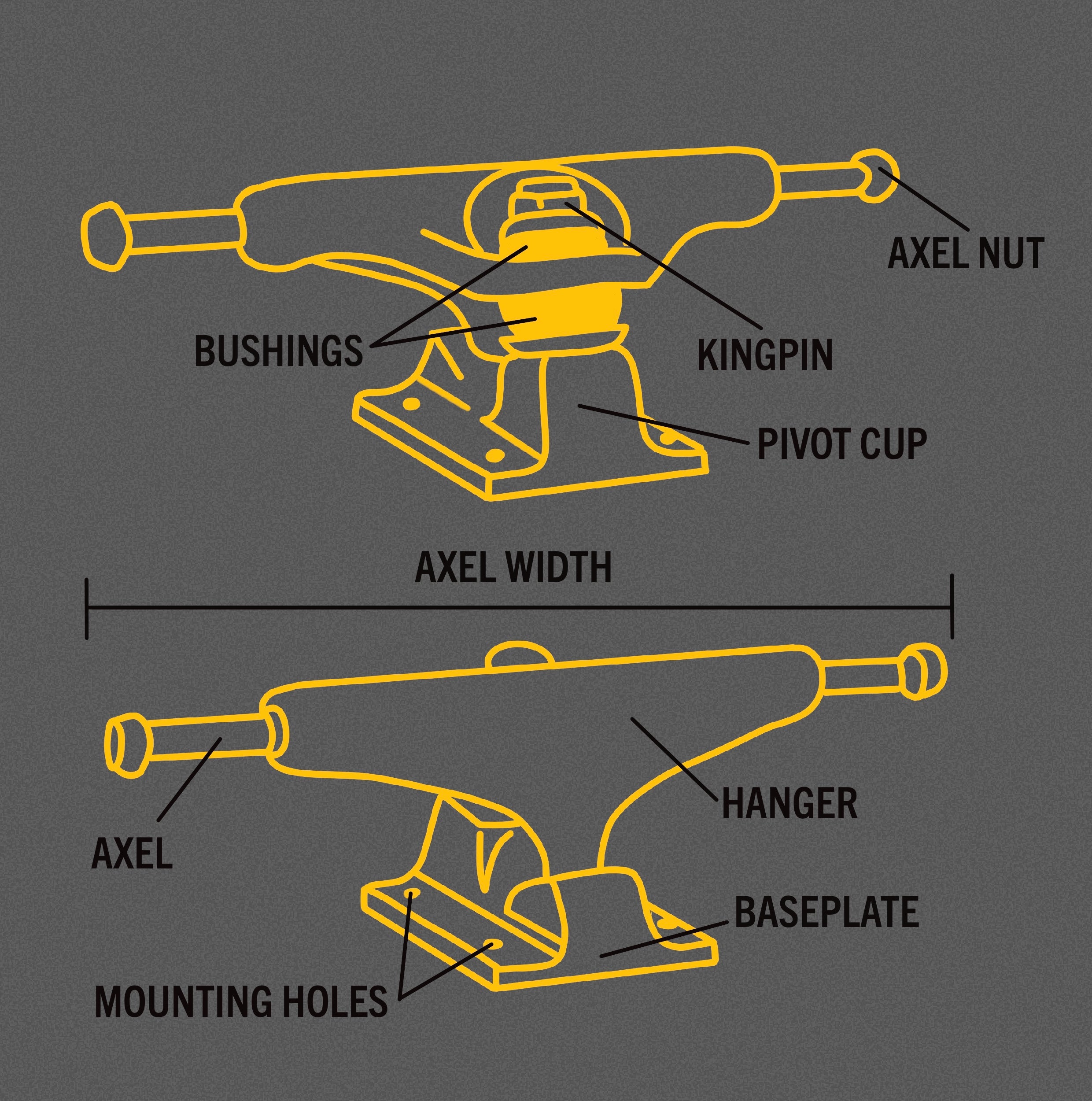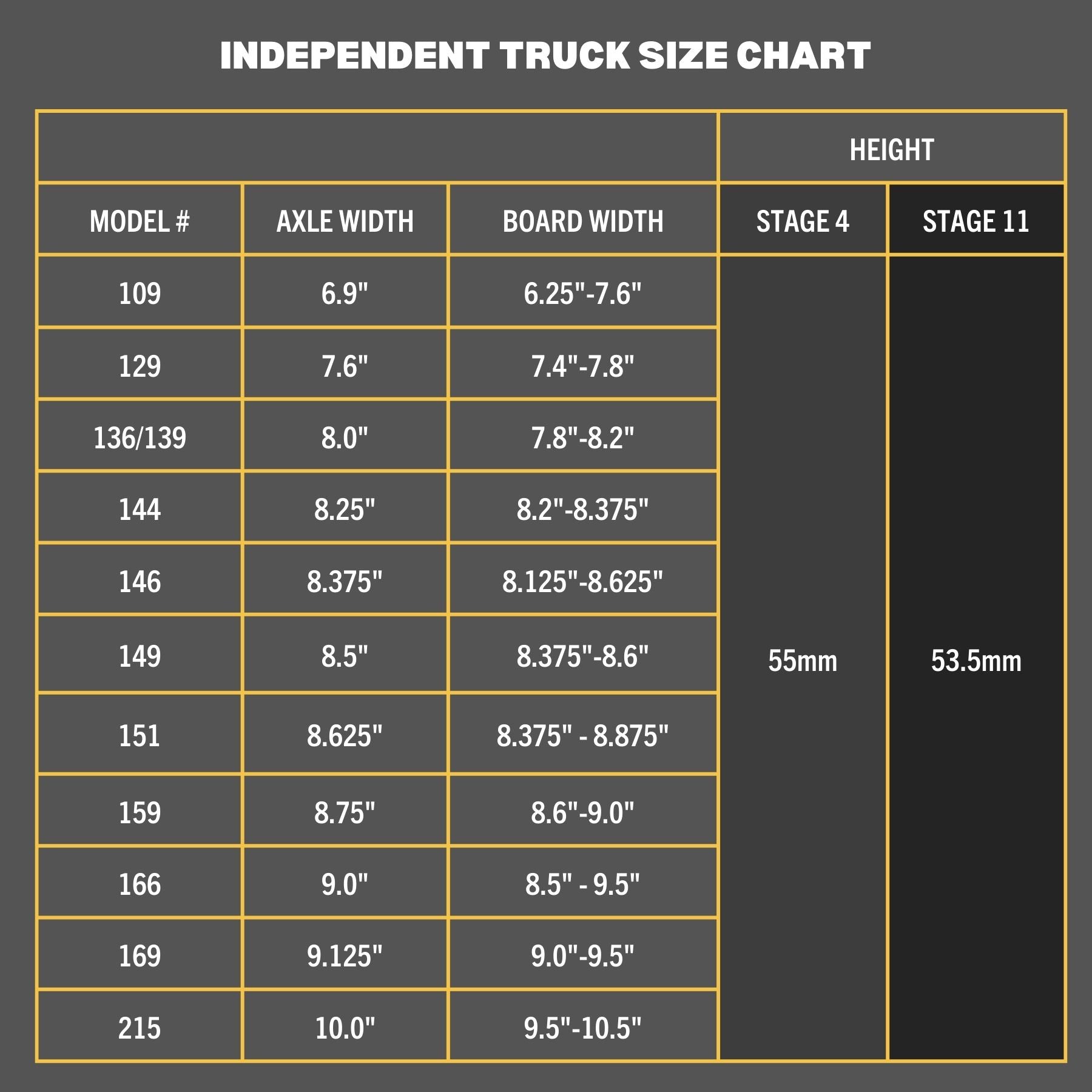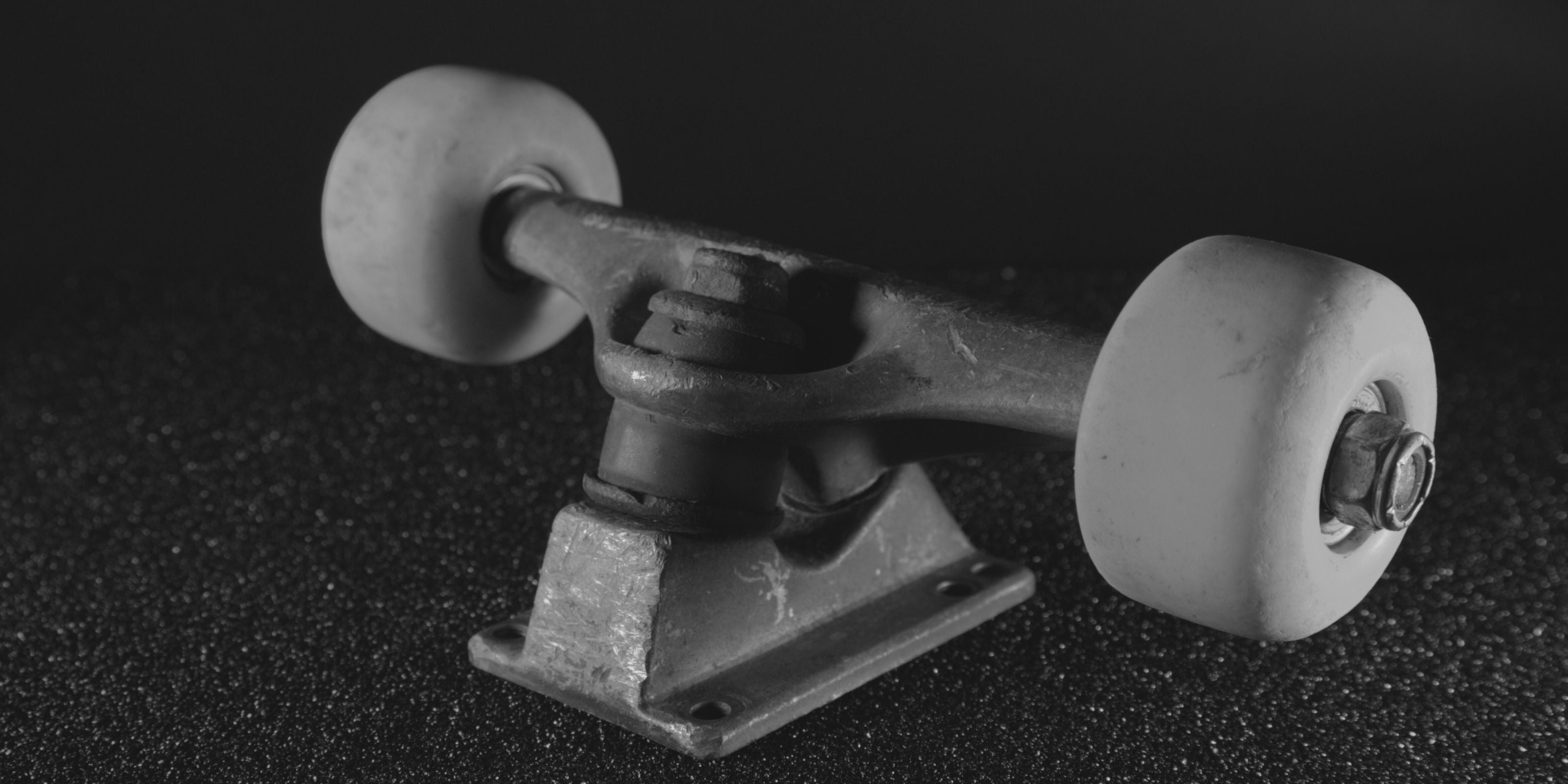New to the skate scene and confused about trucks? You're in the right spot. We're breaking down the basics on those metal things that connect your skate deck to your wheels.
COMPONENTS
Baseplate: The rectangular part of the truck that is bolted to your deck through the mounting holes.
Hanger: The part of the truck that rotates to allow your skateboard to turn and is the point that makes contact with rails.
Axel & Axel Nut: The axel is the part of the hanger you put your wheels on and the axel nut keeps the wheel securely on the trucks.
Axel Width is the measurement of the entire width of the hanger to end of the axel. This corresponds with the width of your deck.
Kingpin: The Kingpin is the bolt that attaches the hanger to the baseplate. This is the part you adjust to loosen or tighten your trucks depending on personal preference.
Bushings: The rubbery part of your truck that fits around the kingpin. This allows your skateboard to turn and pivot smoothly. We'll explain more about this when we cover truck adjusments below.


TRUCK SIZING
The first thing you’ll need to know is the width of your deck. You want your trucks to lie flush with the edges of your deck and not overhang or be hidden completely by your deck. Too narrow of trucks will give you an unstable skateboard and too wide can cause interference with your foot when pushing. It can be pretty confusing when you’re trying to find trucks for your deck because your deck is measured in inches and your trucks have various measurement units depending on the brand. You can use the size charts below to make sure your deck and trucks are compatible.
The next thing you may want to be mindful of is truck height. If you're sticking to simple tricks, you probably won't notice a subtle difference in truck height. That being said, more advanced street and park skaters that focus on technical tricks may prefer a lower truck because it’s more responsive, stable and offers better grind clearance. Low trucks will require smaller wheels. A higher truck allows for a better turning radius and is compatible with larger wheels. This is more appealing for cruisers and transitional skaters who focus on riding bowls and ramps with fluidity.
TRUCK SIZE CHARTS






